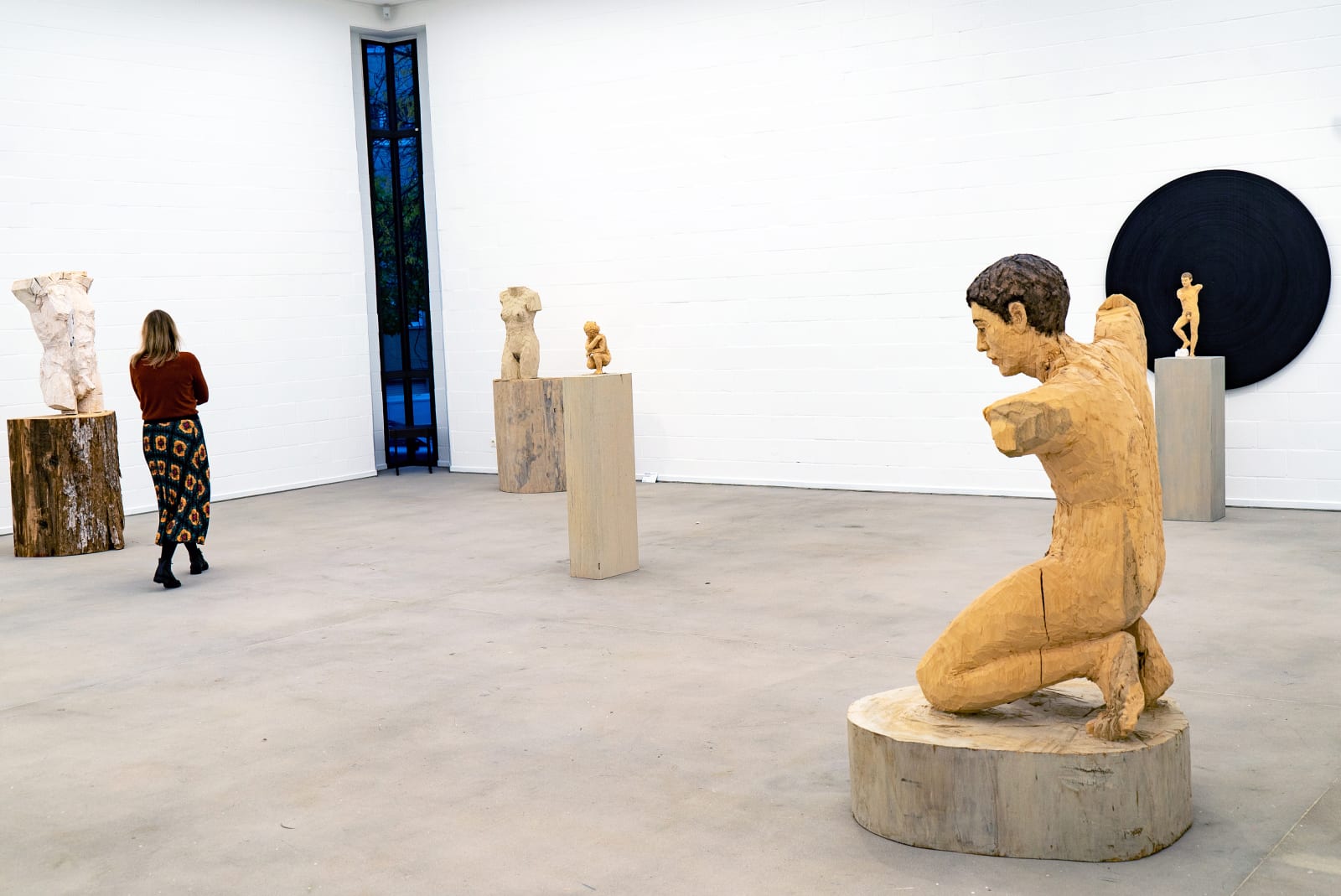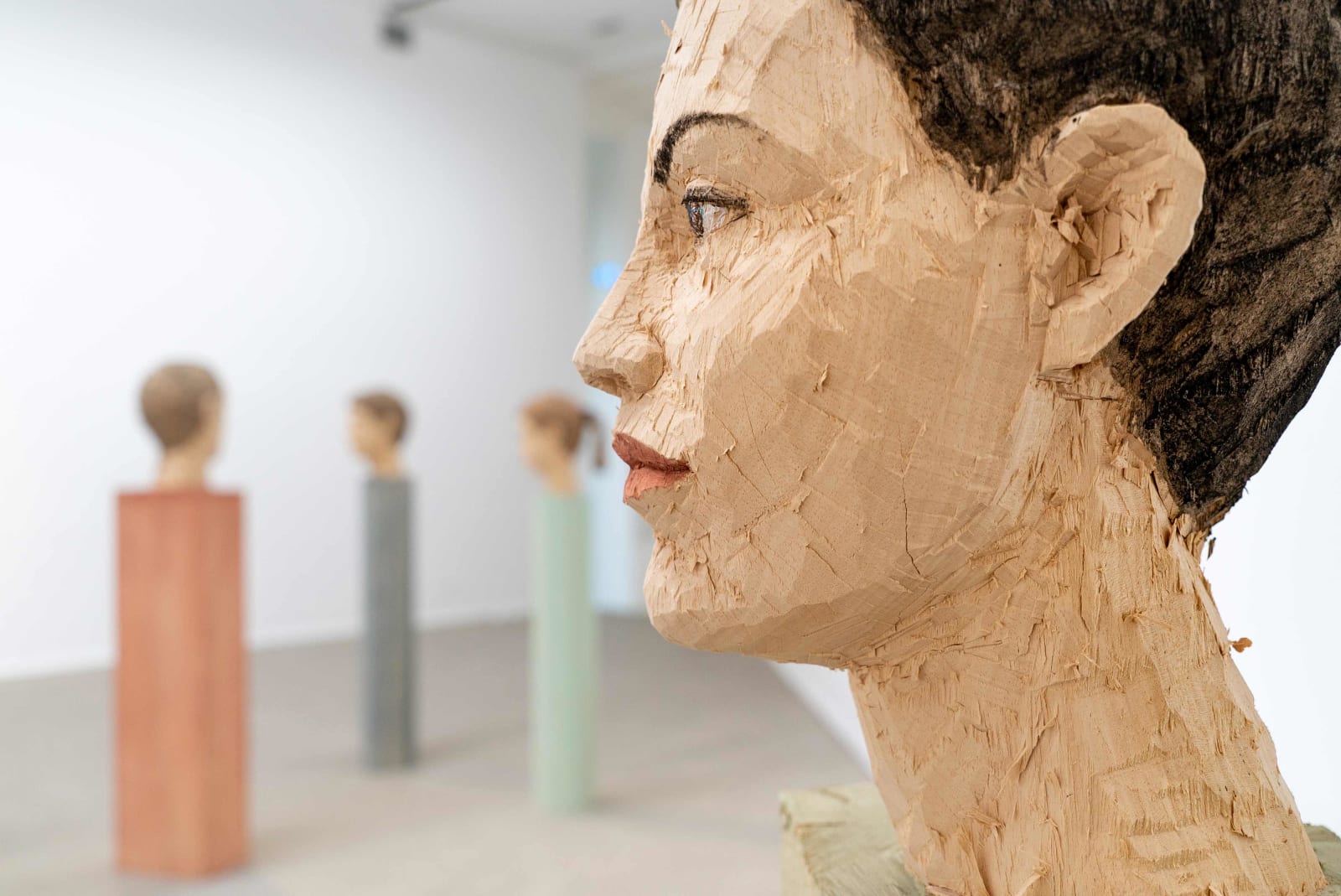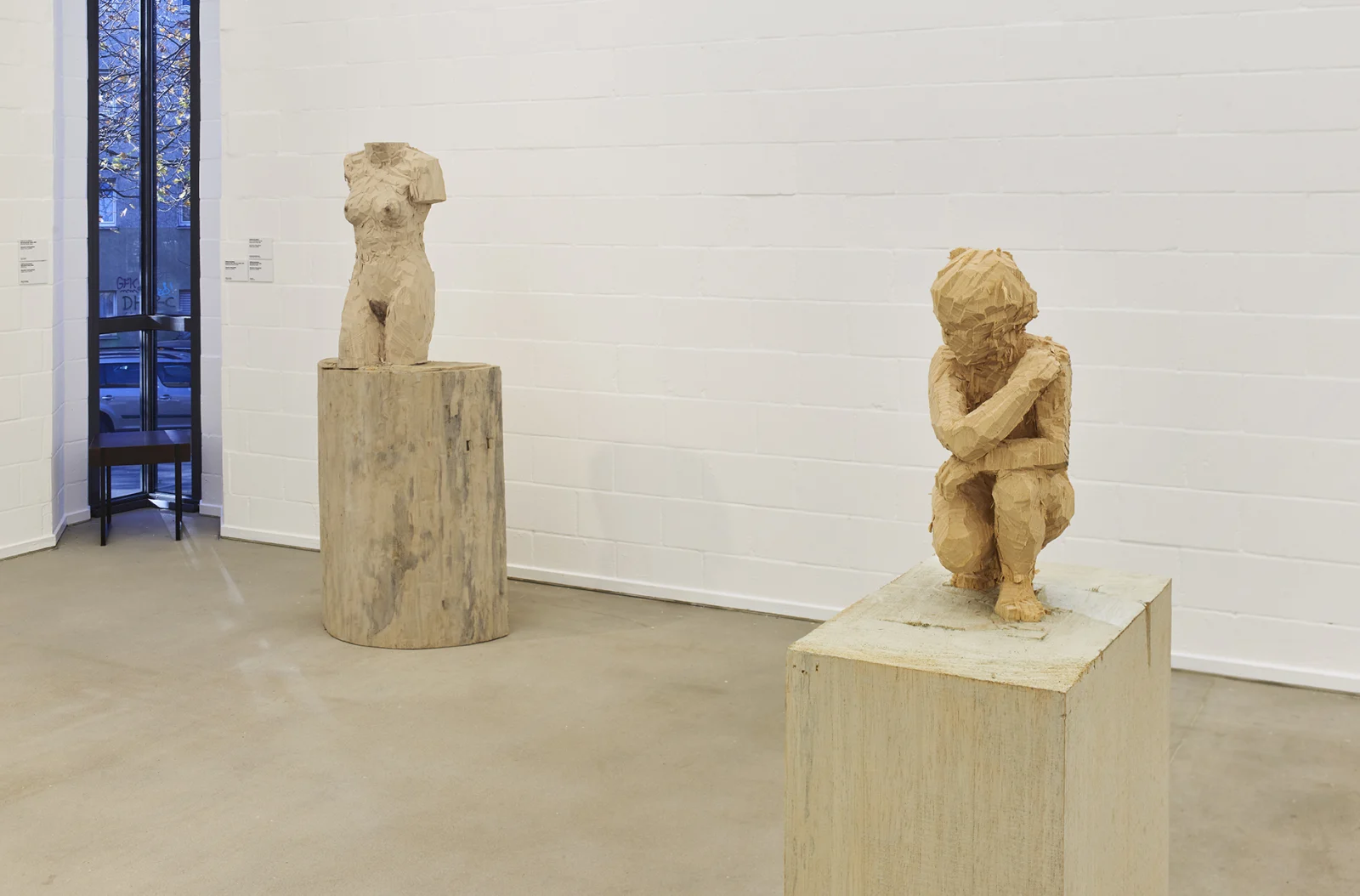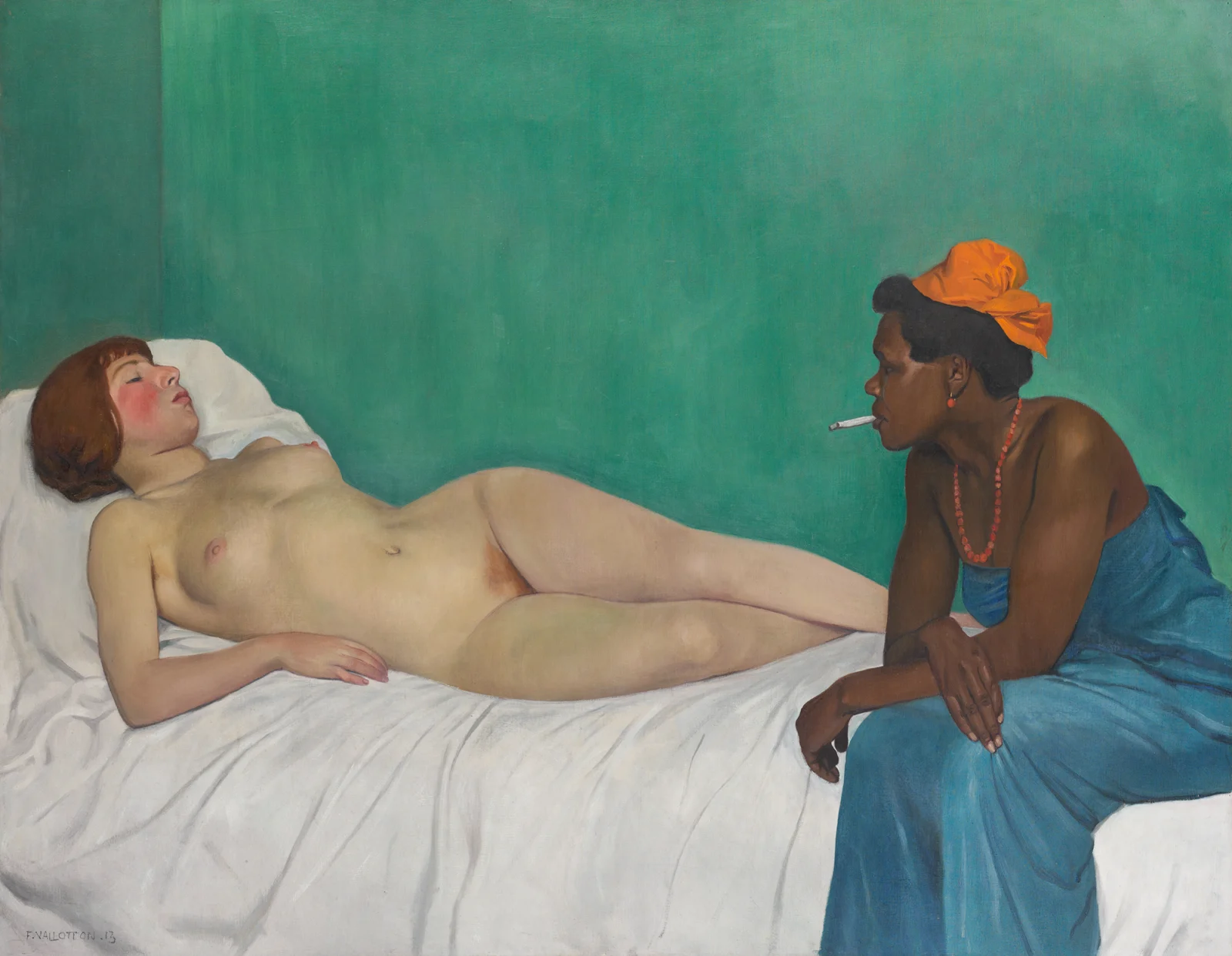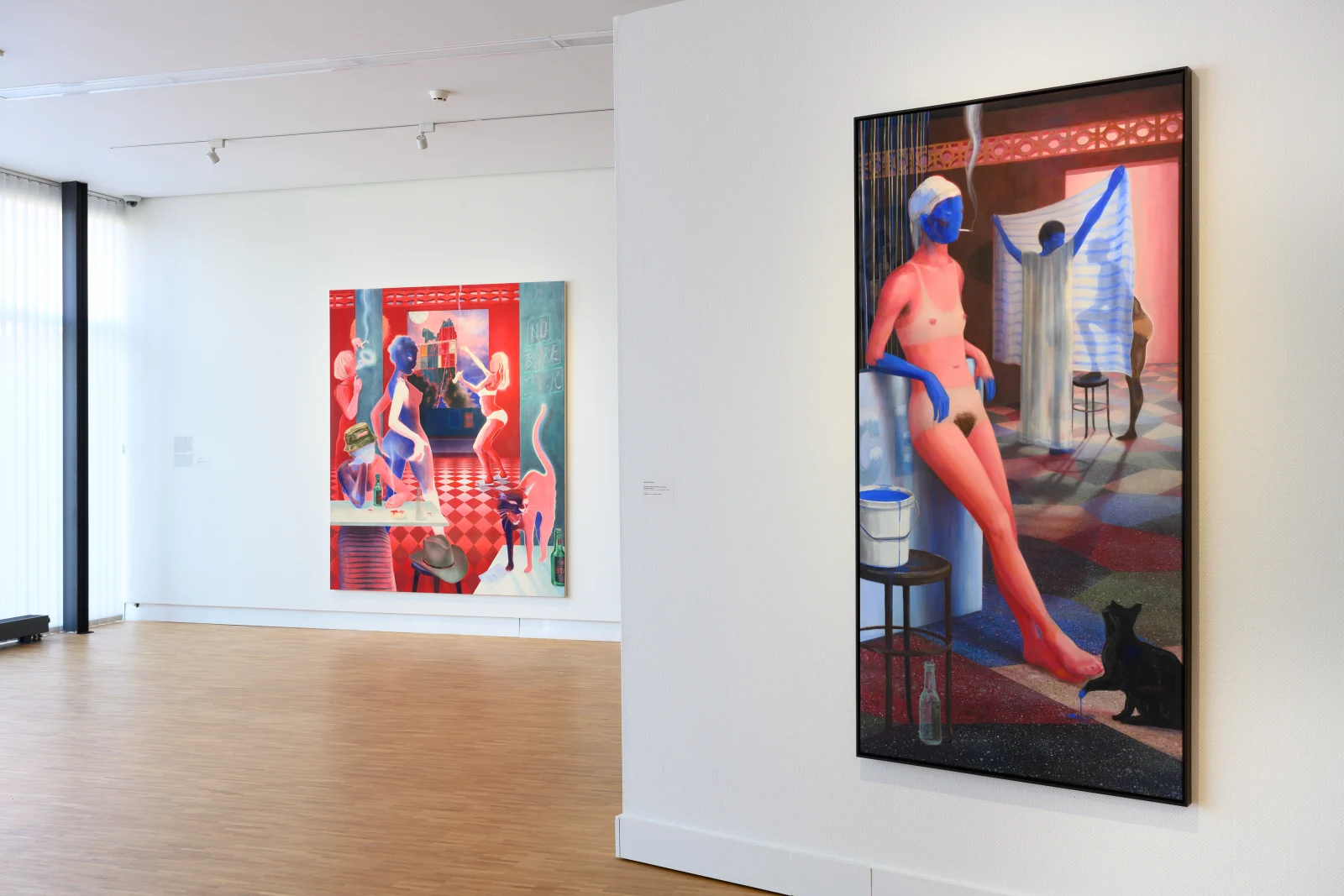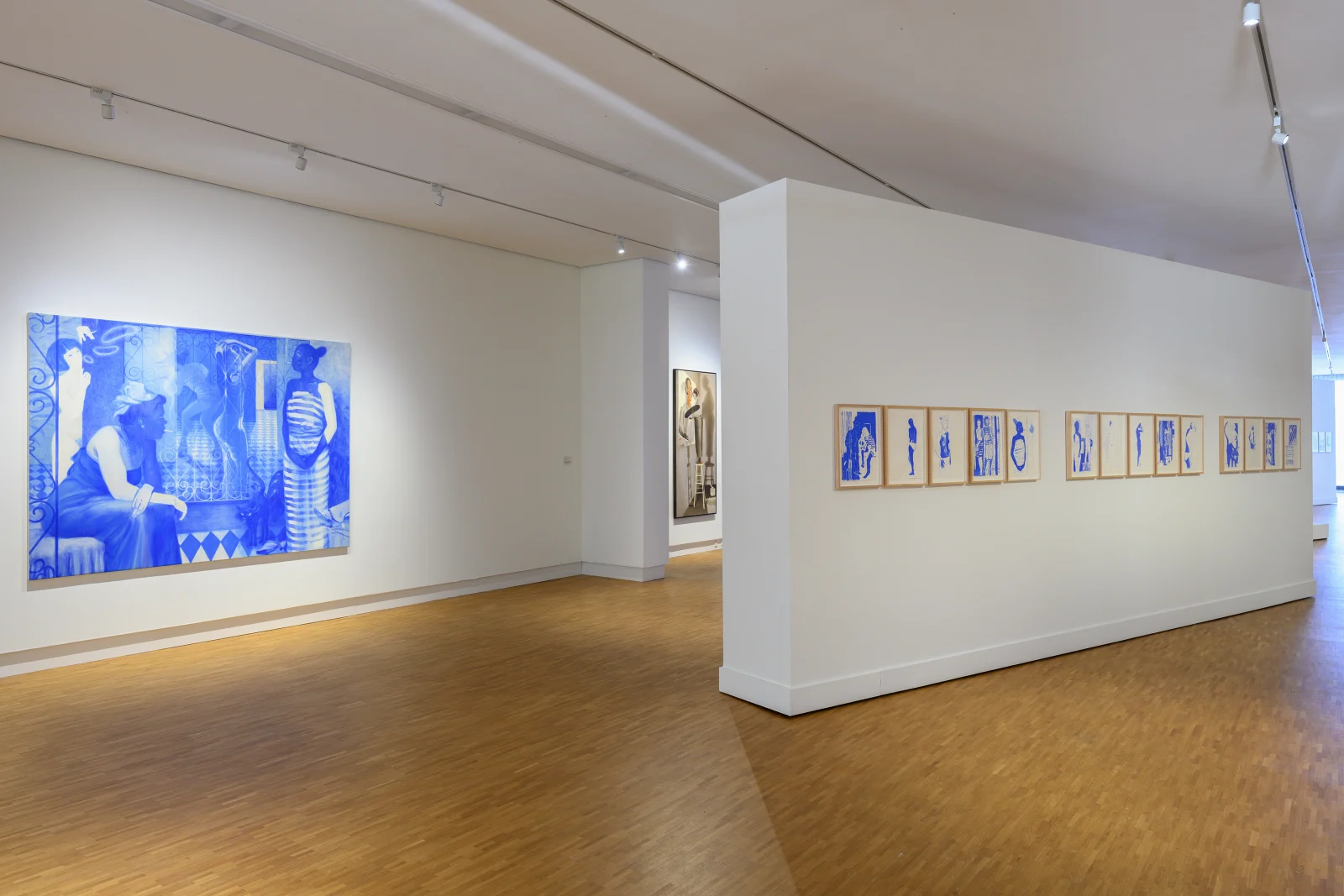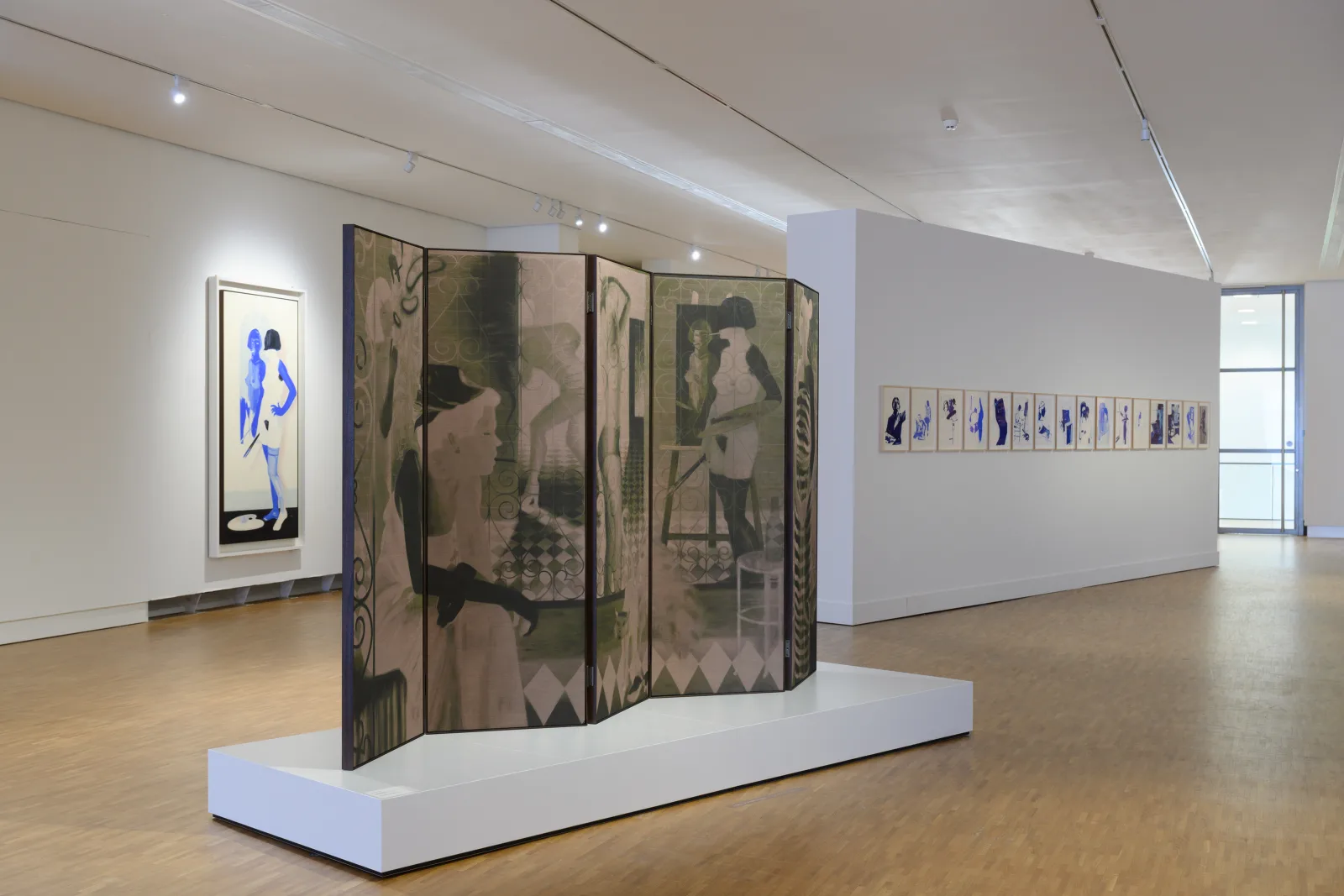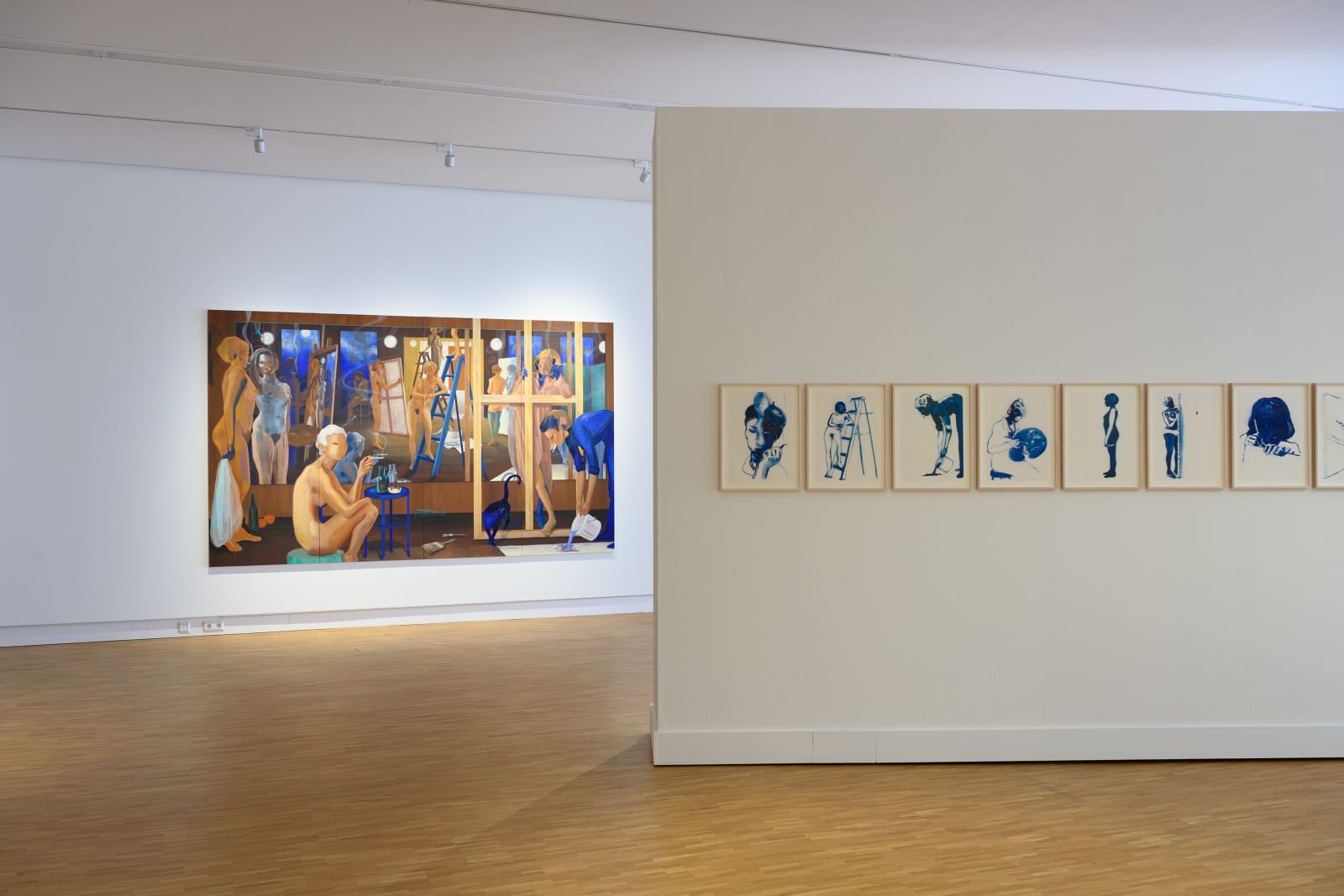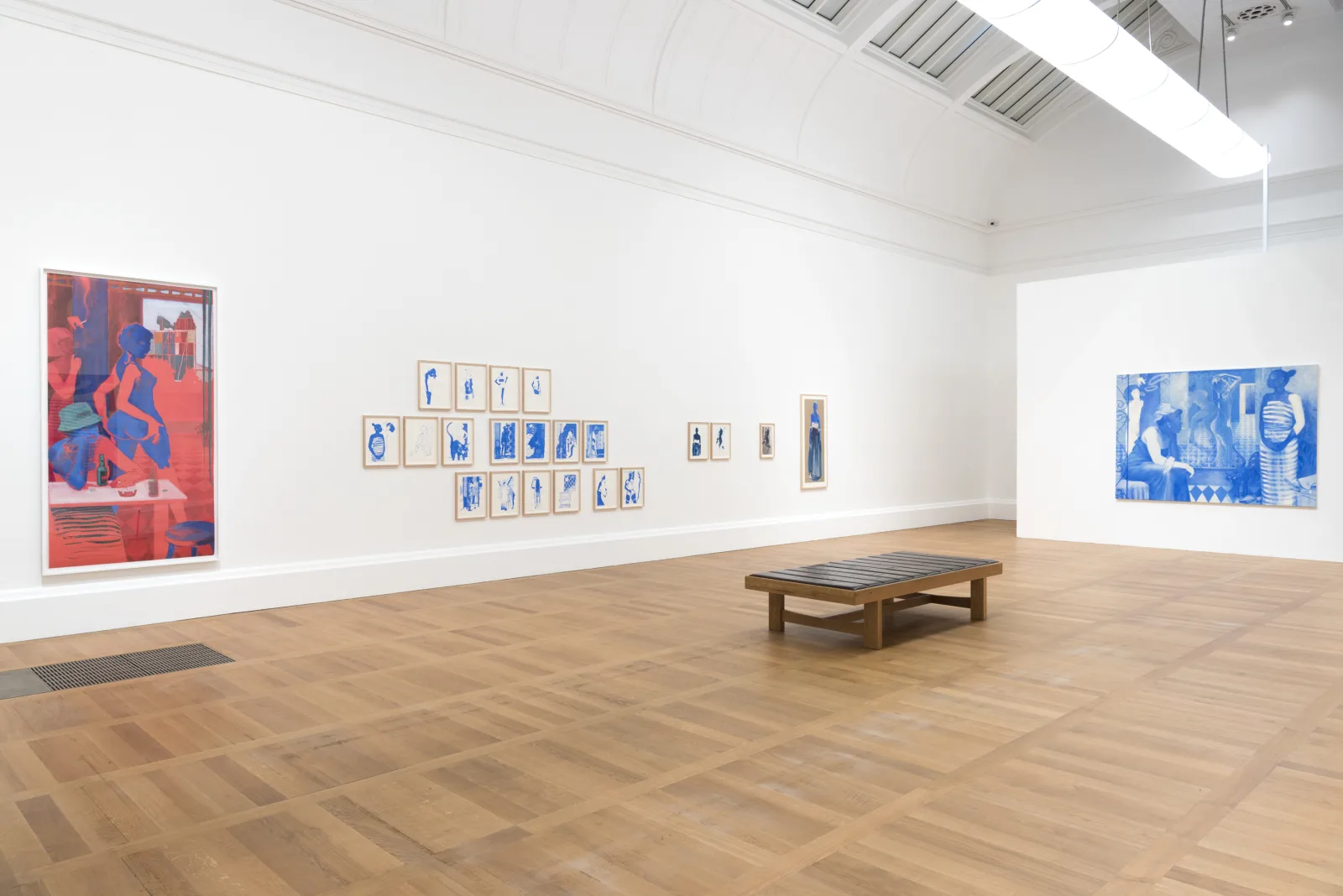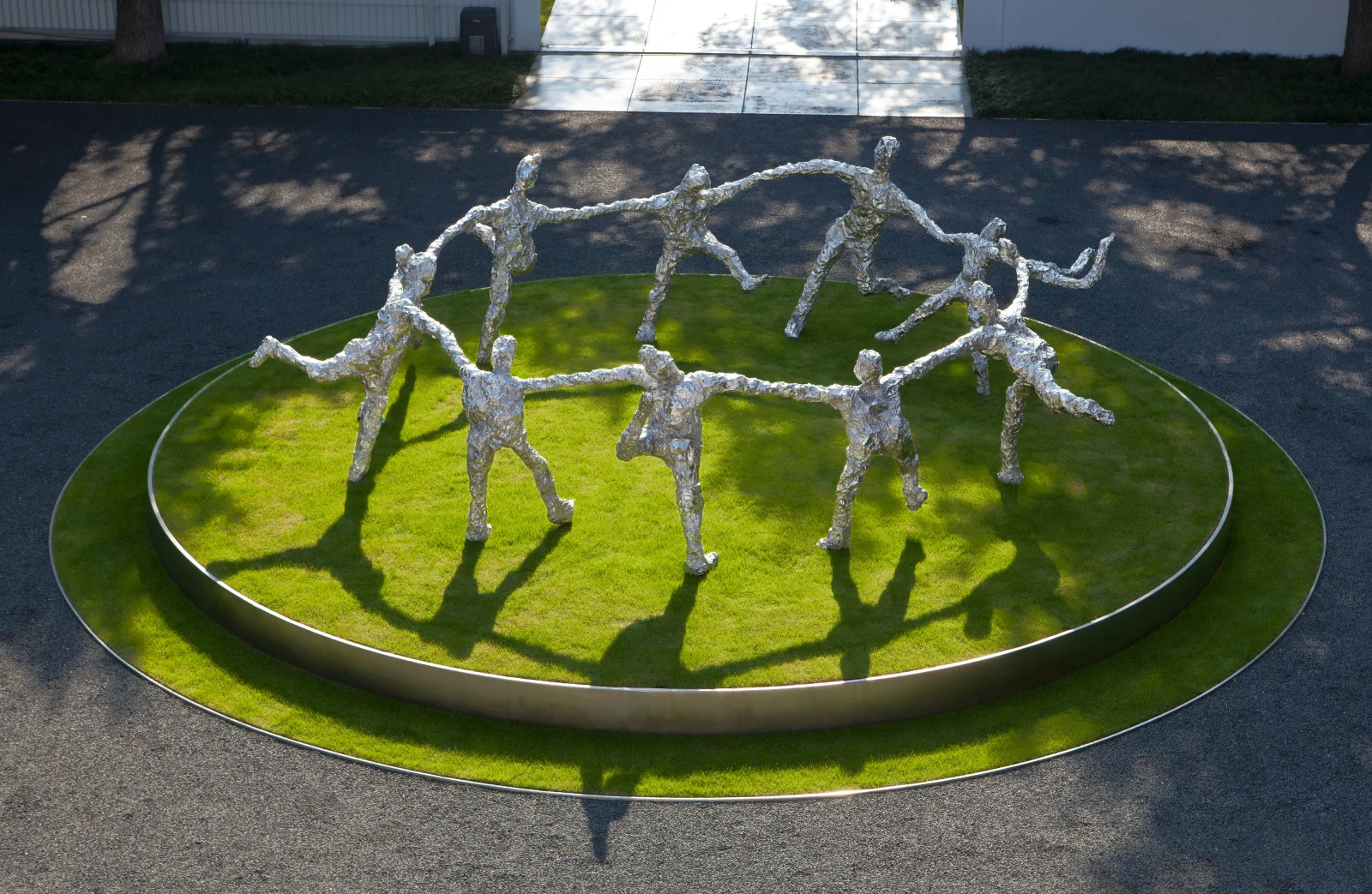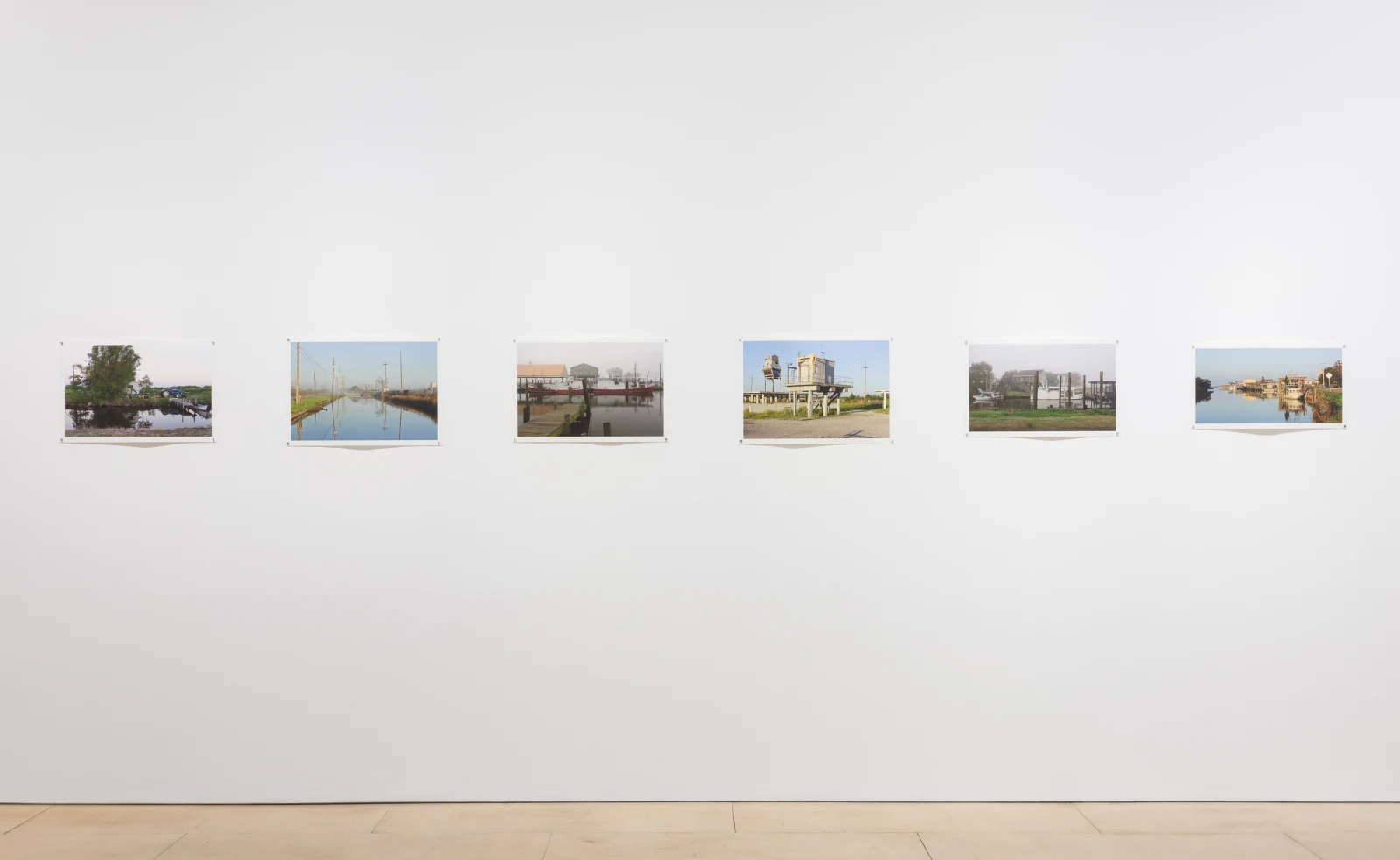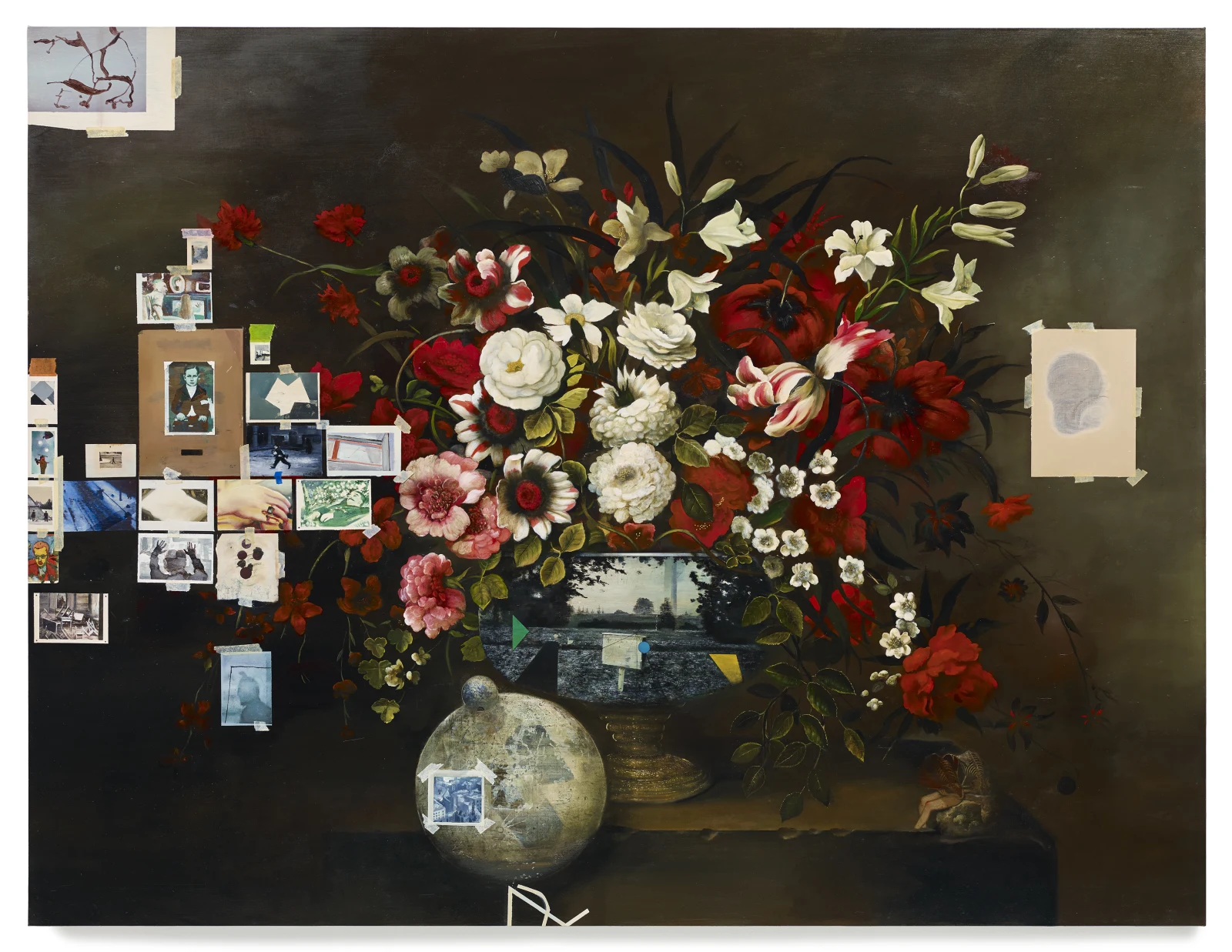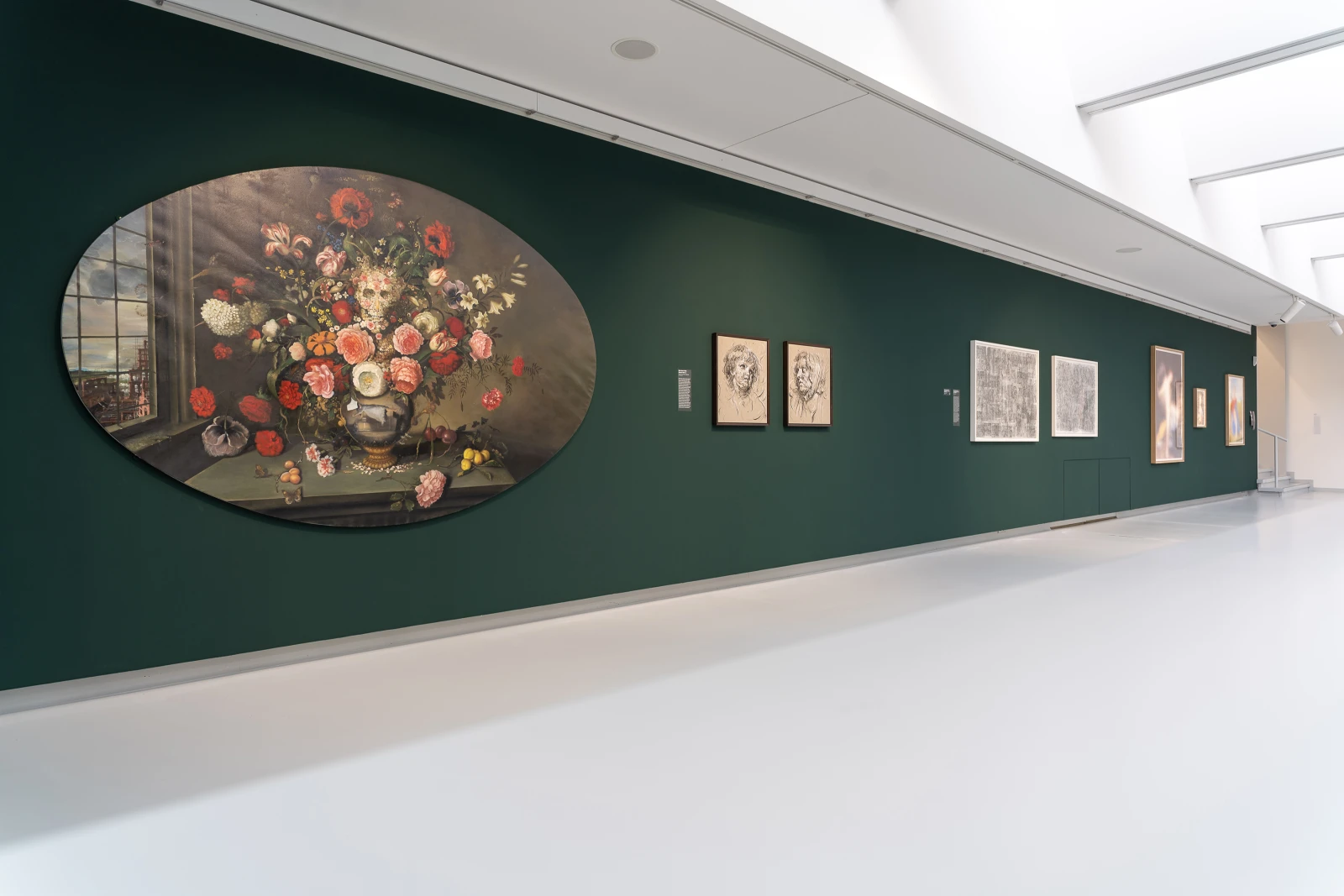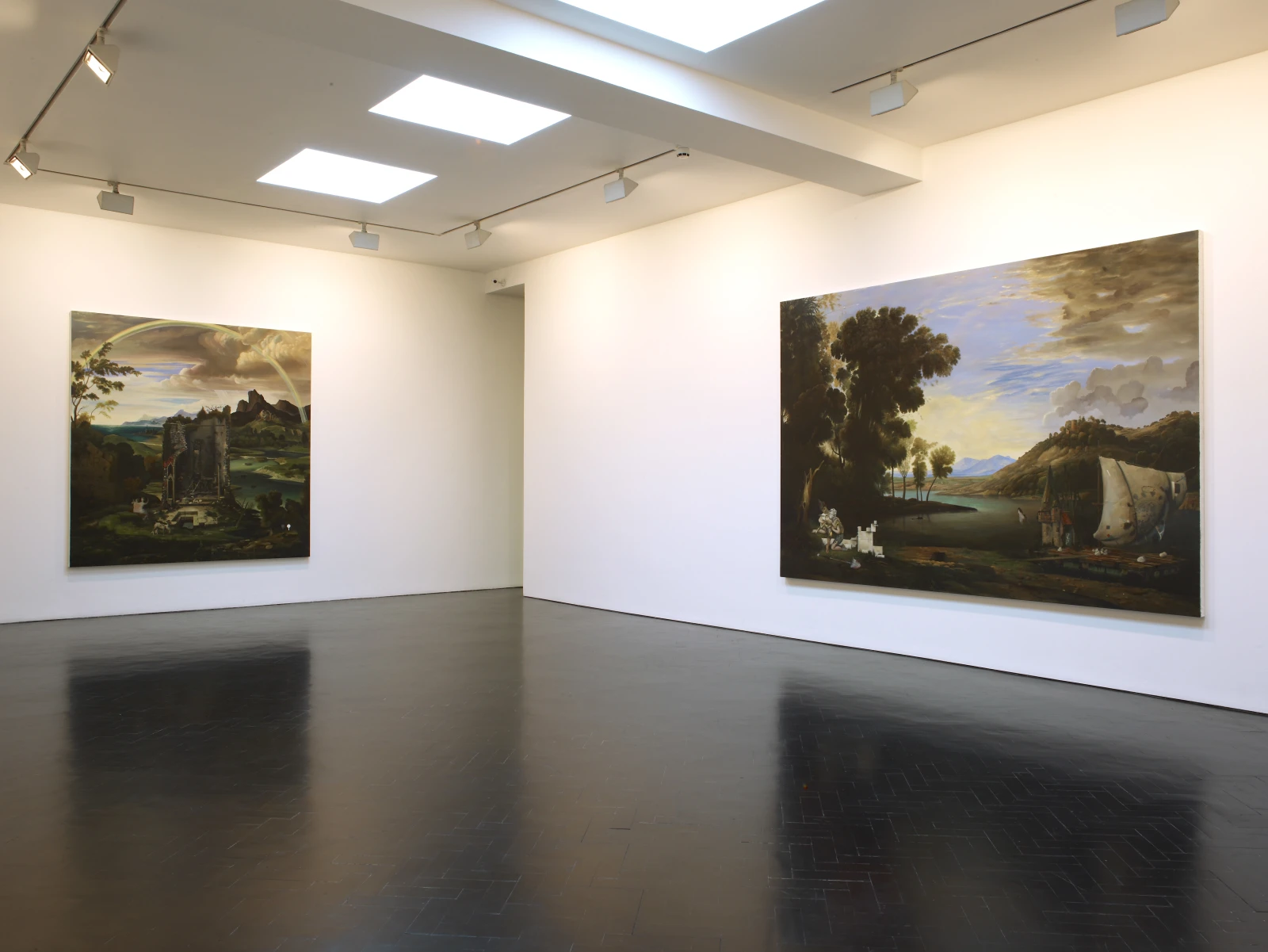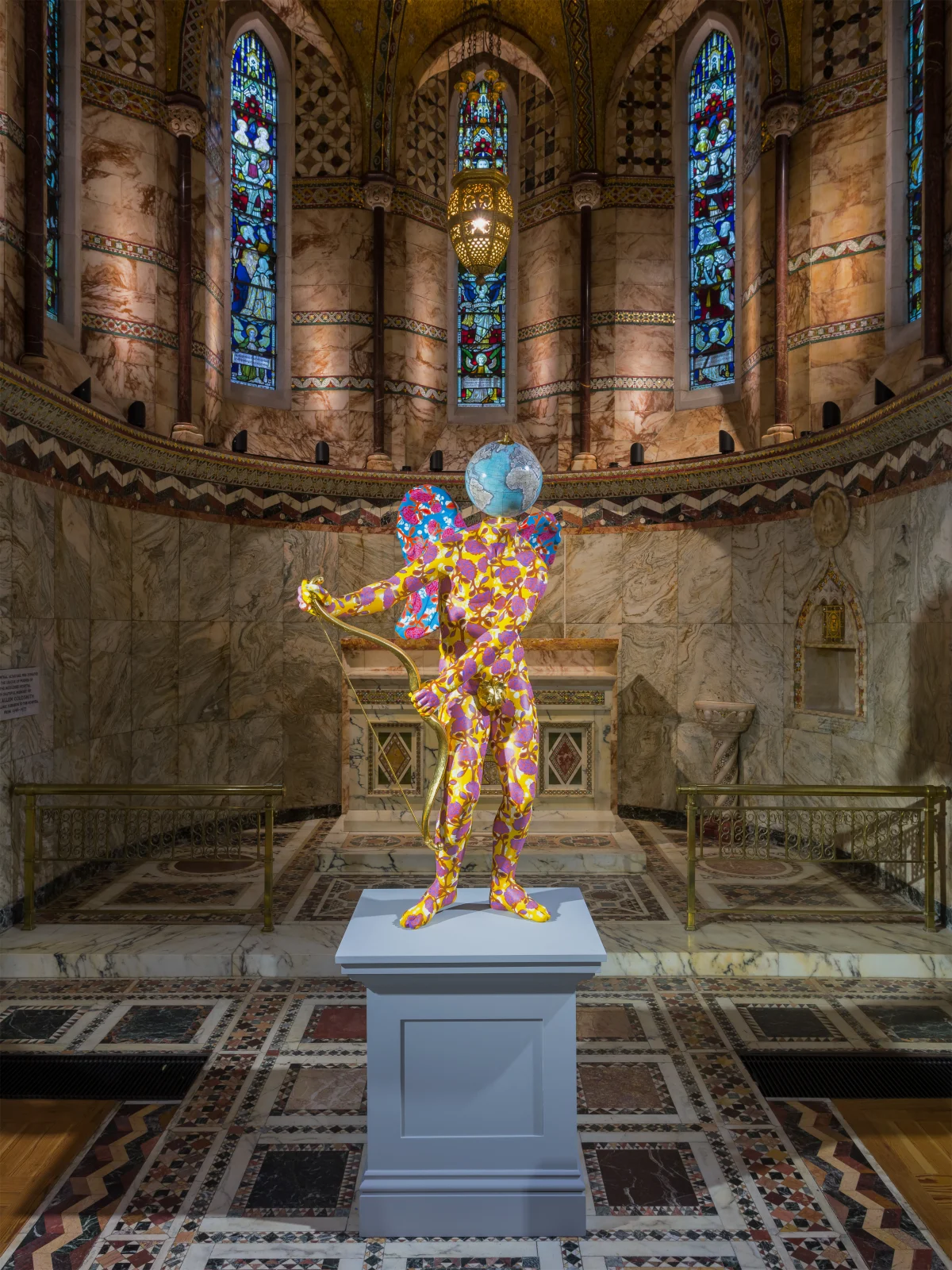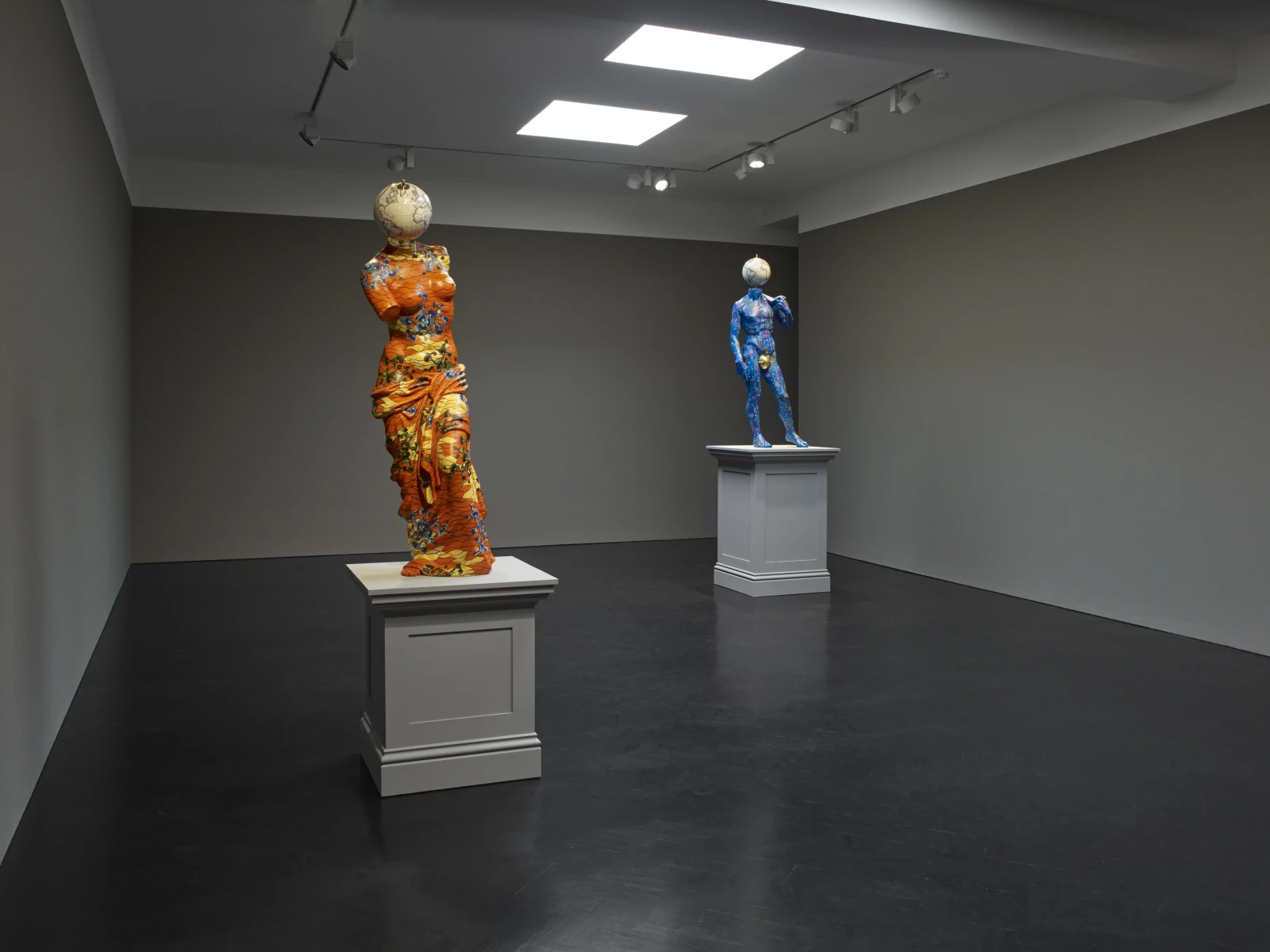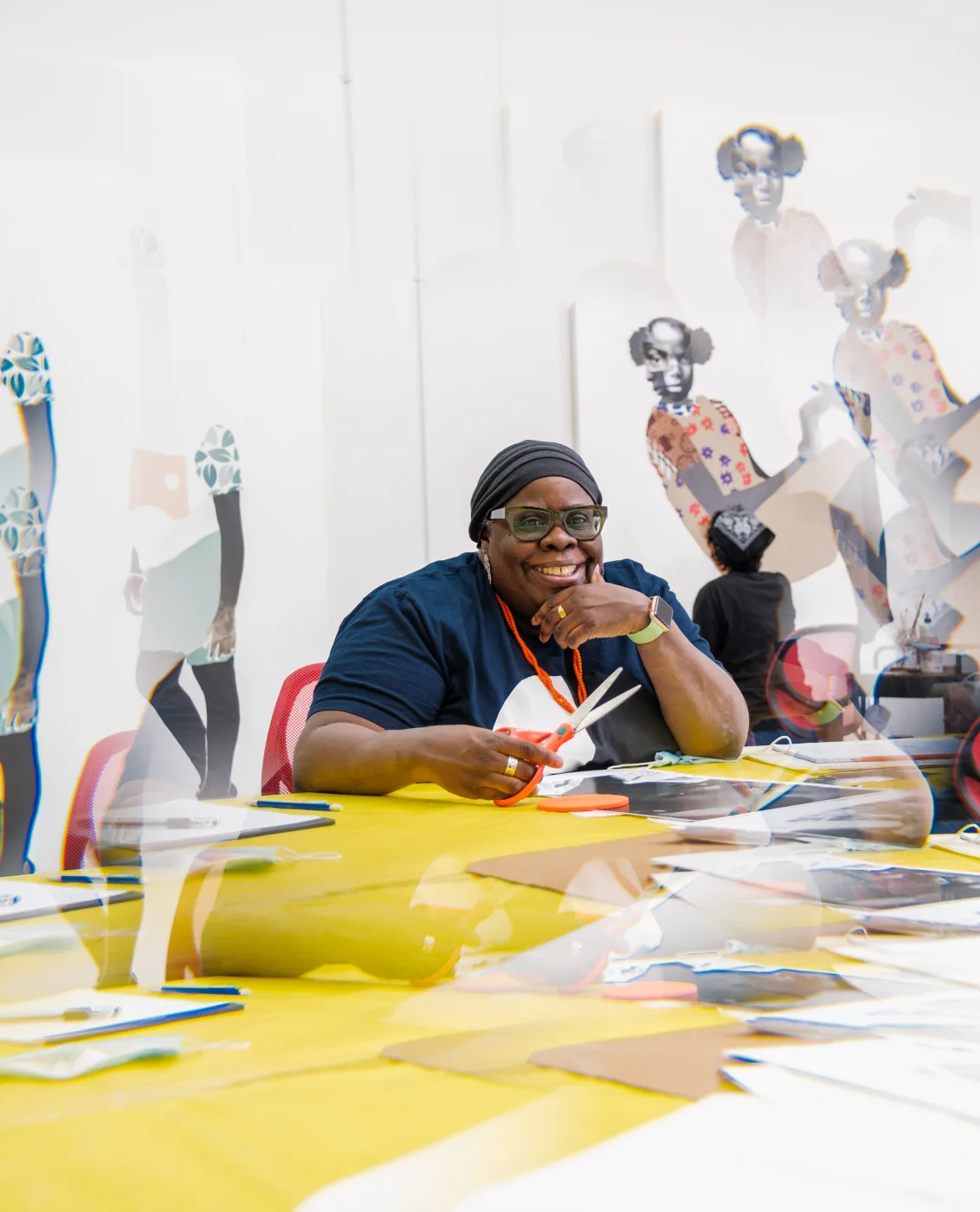"The past is — will always be — as much a work in progress as the future."
- Jennifer Higgie.

‘Past Present’ brings together paintings, sculptures and prints inspired by notable historic figures such as Matisse, Moore and Picasso amongst others. The presentation highlights one work by each of the following artists: Juan Araujo, Stephan Balkenhol, Lisa Brice, Tom Friedman, Wayne Gonzales, Ged Quinn, Deborah Roberts and Yinka Shonibare CBE RA.
Whilst we may consider referencing to be a postmodern phenomenon, artists have been inspired by past masters throughout history; Landseer after Rubens; Singer Sargent after Velasquez; Latour after Titian, to name but a few. ‘Past Present’ explores the influence of celebrated artists and movements on contemporary works.

Juan Araujo

‘Sculpture Landscape – Double Oval’ continues Araujo's engagement with diverse forms of modernist expression. The painting depicts Henry Moore’s monumental sculpture ‘Double Oval’ in the lush pastures of Perry Green, using unpainted sections that contrast with expressive brushwork and vividly rendered colours. Nestled in the landscape, Moore’s work gives the impression of being merely the tip of an iceberg, hinting at a larger form buried underground. Indeed the elegant sculpture has been compared to a pair of scissors, thrust into the ground.
This painting was included in Araujo's solo exhibition at PEER, London in 2019. For this exhibition he created a new series of photorealistic paintings, works on paper and multimedia works inspired by visits to the Henry Moore Foundation in Perry Green, Hertfordshire and the Barbican Centre, London in early 2018.
"[Araujo suggests] that citation, reproduction, and repetition are not only the tools that drive the work of artists today, but also provide the rhythms underlying the foundations of art history."
- Alexandre Melo, 'Juan Araujo, Culturgest', Artforum (2018).

Stephan Balkenhol
"Stephan Balkenhol’s sculptures embody a conscious debate with the sculptural tradition of the classic antiquity and unite a sequence of partially opposite sculptural ideas and concepts. Balkenhol is a post-abstract, post-minimalist sculptor and his figures have been filtered by a modernist sieve, thus becoming an objective amorphous reduction of formal language."
- Kay Heymer, 'The Sculptor Stephan Balkenhol', Stayinart (2019).

Stephan Balkenhol is recognised for his technical prowess and his devotion to exploring figuration in contemporary art. Carved from wawa wood, the free-standing sculpture ‘Venus of Kassel’ is a characteristic example of the artist's practice. This work is inspired by the marble statue 'Venus of Kassel', which survives in an eighteenth-century plaster model in the collection of Museum Schloss Wilhelmshöhe, Kassel.
Balkenhol reconceived the sculpture in his own distinctive style. Intimately engaged with the carving process, the artist uses a hammer and chisel to shape his figures. The surface remains a document to Balkenhol's process, exposing the trace of his tools. Also visible are knots, grain and cracks in the texture of the wood. Liberated from the moral, political and aesthetic precepts that typically shape depictions of the human form, this figure reveals instead what the artist describes as a “wooden mirror” for the viewer’s imagination.

Lisa Brice
"For any figurative painter working today, the spectres of art history haunt their brushstrokes. These spectres, we all know, are predominantly men; men frequently painting women, who are in turn, frequently nude. This is the slippery territory that South African painter Lisa Brice chooses to inhabit. And not just inhabit, but complicate, muddy and turn on its head in refreshingly satisfying ways."
- Laura Smith (curator at Whitechapel Gallery, London), "Lisa Brice: It's A Feeling Thing", included in Smoke and Mirrors, published to accompany the solo exhibition, 'Smoke and Mirrors', KM21, The Hague (2020-2021).
Lisa Brice is renowned for works that interrogate the male gaze and contest the misogynistic nature of historical figuration typically painted by white men for white men. ‘Untitled’ is a new diptych created by the South African artist for her solo exhibition at KM21, The Hague, Netherlands in November 2020. Each painting in this new group of works features a woman variously portrayed as an artist clutching a palette or as the nonchalant subject, either defiantly returning the viewer’s gaze or regarding her own likeness on a canvas within the painting.
'Untitled' is rendered in an evocative cobalt blue oil on tracing paper. As the artist explains, “I did my first blue drawing in an attempt to imitate the blue light of neon signs, which led to trying to capture the fleeting colour of twilight in paint, the transitional gloaming hour. It has gone on to accumulate further meaning as the work has progressed. I associate it with the Trinidadian ‘Blue Devil’, a formidable Carnival character. Masqueraders are emboldened by a coating of cobalt blue paint ... This notion of a masked identity was employed during slavery, when the character was born, freeing the revellers from accountability.” Brice’s use of this blue obscures the naturalistic skin tones of the body to further discourage an easy ‘read’ of the female form.
"Best-known for turning the male dominated traditions of art history inside out, Lisa Brice's paintings of women don't so much return the male gaze as ignore it altogether. Self-possessed, sexual and surrounded by other women, there's a lot to be said about how they differ from most other images of the female form in the Tate's collection."
- 'Free London | The Female gaze: ‘Art Now: Lisa Brice’', Time Out (2018).

Tom Friedman
"Art, for me, is a context to slow the viewer’s experience from their everyday life in order to think about things they haven’t thought about. Or to think in a new way."
- Tom Friedman.
Inspired by Henri Matisse’s renowned painting 'La Danse', Friedman's ‘Circle Dance’ comprises a circle of eleven polished stainless steel figures dancing joyfully. Their balletic movements are frozen in time. Conceived in a majestic scale, ‘Circle Dance’ captures the playful exploration at the heart of Friedman’s practice.
Artists have exploited everyday materials since Marcel Duchamp first introduced his readymades. Many of Friedman’s works start with ordinary materials such as paper, wire, cardboard, plastic cups, pencils, foam core, Styrofoam. ‘Circle Dance’ was cast in magnificent detail from a maquette originally fashioned out of domestic oven roasting trays. Friedman delights in the creases and lines embedded in the malleable foil, transforming the domestic and everyday with alchemic touch. As New York Times critic Roberta Smith has written, Friedman demonstrates “unusual clarity in the interaction of materials and thought. In fact, he connects the two.”

Wayne Gonzales

‘Woman in the Garden' is inspired by a sculpture by Pablo Picasso in the collection of Museum of Modern Art, New York. Made from welded scrap iron, Picasso's work reduces the human form to a complex assemblage of fractured, abstract shapes. Gonzales conveys the sculpture's graphic outline and rough texture through his signature use of crosshatching. The stark, industrial forms recall Gonzales' photography-based paintings of industrial landscapes and shuttered steel plants and reveal the artist's nuanced engagement with a wide variety of source material.
Gonzales' approach to composition is much like a photographer, cropping, editing and manipulating his own source imagery using digital technology. Using a technique centred on the effects of chiaroscuro, the artist creates form through differing densities of interlocking lines. Dependent on our proximity to the work, Gonzales’ scenes come in and out of focus; from afar we are granted a strong sense of the whole, when up close the image dissolves into a haze of individual brush strokes and small gestures. By making references across time and art history, Gonzales imbues the work with a sense of impermanence, and spectacle.

Ged Quinn


In ‘Cut’, Ged Quinn weaves the visual language of Enlightenment Spanish still life painting into a palimpsest of cultural references. The floral background is derived from the work of Juan de Arellano 1614-76 and Bartolomé Pérez 1634-98, who typify this little-known genre. Meticulously rendered cut-outs of found reproductions appear roughly taped to the surface of the painting. These trompe l’oeil fragments multiply the time and space depicted. A photo of Rimbaud at his first holy communion coexists with a film still from Poltergeist, a discoloured magazine reproduction of a drawing by Jackson Pollock, archival photographs from the October Revolution of 1917 and of Stalin lying in state. This collaged imagery forms a multifaceted exploration of political and cultural revolution, encompassing broader themes of idealism and historical cycles.
A major point of reference for this painting is the ‘Mnemosyne Atlas’, 1929 by Aby Warburg, in which the German theorist attempted to map how images of great symbolic or intellectual power emerged in Western antiquity and are reanimated in art and cosmology. Warburg believed that the juxtaposition of images in a thematic sequence could foster insight into the afterlife of charged iconography. Drawing attention to the artwork’s construction, Quinn’s visual quotations engage the viewer in an endless exploration of symbolic resonance.

Deborah Roberts
"A lot of times in my work you will see hands [that pull up] each other, so we can all move forward."
- Deborah Roberts.

Combining collage with mixed media, Roberts' figurative works depict the complexity of Black subjecthood and explore themes of race, identity and gender politics. ‘One history, two versions (Bullet Points)’, Roberts uses collage to highlight the cross-generational struggle against racism, emphasising the importance of history to African-American identity today. The edition combines a badge referencing Martin Luther King’s iconic ‘I Have a Dream’ speech of 1963, with the arm from King’s memorial statue in Washington D.C. “A lot of times in my work you will see hands [that pull up] each other, so we can all move forward.” Roberts explains. “It’s important to pay homage” to those who have “paved the way”. The doll’s innocent face suggests the vulnerability of African-American children as they strive to build their identity in the context of the white gaze and American visual culture at large. Draped in a scarf emblazoned with the stars of the American flag, the doll represents the rights for which generations of African-Americans have fought.
Roberts' use of collage also ‘pays homage’ to her art historical forebears. Dada artists such as Hannah Höch working during the first world war saw the medium as a way of interrogating the society that produced the conflict. Today, it has seen renewed interest as a way of deconstructing the inequities and violence of our era. Unlocking the political potential of collage to address notions of social and political identity, a distinct strain of Dada rebellion runs through this work.


Yinka Shonibare CBE

‘Discobolus (after Naukydes)’ by Yinka Shonibare CBE is inspired by the Roman copy of a now lost Greek sculpture, attributed to Naukydes of Argos. The Roman statue was excavated from the ruins of a villa on the Appian Way by Scottish art dealer and archaeologist Gavin Hamilton in 1792 and is now housed in the collection of The Vatican Museums.
Shonibare created this sculpture for the group exhibition ‘From Life’, which launched the 250th anniversary celebrations of Royal Academy of Arts, London in 2018. Portraying an eternally youthful, naked athlete, the work embodies the archetype of masculine athleticism and strength. Gripping a discus in his left hand, the figure's toes contract to reveal the tension which runs through his body as he prepares himself to throw.
Shonibare transforms this symbol of the Roman Empire with his signature Dutch wax batik design. The artist explains, "the original classical sculptures would have been painted in bright colours [...] That is before Johann Winchelmann, the 19th century historian, created his fallacy of the superiority of the white classical marble sculpture." Seductive in colour and beauty, ‘Discobolus (after Naukydes)’ is reimagined for a domestic setting, whilst retaining the dramatic impact of the original masterpiece.





